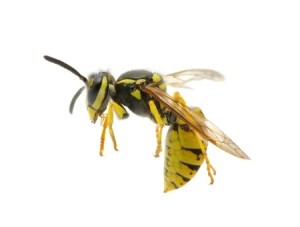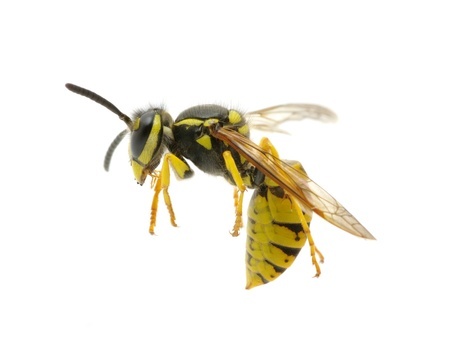These Invasive Yellow Jackets Like To Nest Indoors

Who has ever heard of nonnative yellowjackets thriving within the United States. Sure, America is home to many species of insect that do not belong. Many of these invasive insects become pests in North America. But what about German yellowjackets? Or Vespula germanica, as they are officially named. It is not everyday that we hear about invasive yellowjackets. German yellowjackets are native too….well….Germany, of course. Who has ever heard of an invasive insect from Germany? German yellowjackets possess many features and behaviors that distinguish them from yellowjackets that are native to America.
There is no doubt that German yellowjackets are more dangerous than American yellowjackets. For example, German yellowjackets prefer to build their nests indoors, which makes encounters with humans probable. German yellowjackets prefer building their nests within urban or suburban areas where more people congregate. Like all yellowjackets, the German yellowjacket is very aggressive, even more so than American yellowjackets, especially when protecting their nests. They can sting people repeatedly. German yellowjackets will not hesitate to attack animals. In fact, German yellowjackets have been seen chasing animals and humans for considerably long distances. In other words, when a German yellowjacket becomes angry, they also become determined to exact revenge with their intolerably painful stings.Those with allergies or sensitivities to insect stings should run the other way when encountering any type of yellowjacket or yellowjacket nests.
German yellowjacket colonies can include thousands of members. German yellowjackets are also unique in that they never abandon a nest. For example, colonies of these invasive yellowjackets die out every fall, except for the overwintering queens. However, during the early spring, the new generation of German yellowjackets immediately return to the areas where their ancestors’ old nests are located. German yellowjackets build new nests that are very close to the old ones, or they build additions onto old nests. This must happen a lot since many attics have been found with either several nests, or one huge nest located within. In Washington DC an entomologist discovered a German yellowjacket nest in an attic. The nest measured at five feet in width with a depth of three feet. If you find a yellowjacket nest of any kind, do not even think of removing it yourself, it will not work out well for you. Instead, contact pest-control professionals.
Have you ever spotted a yellowjacket nest containing yellowjackets? Did any of them sting you once, or more? Was it more painful than any other insect sting that you had sustained during your life? Or was it the first time you were stung?

